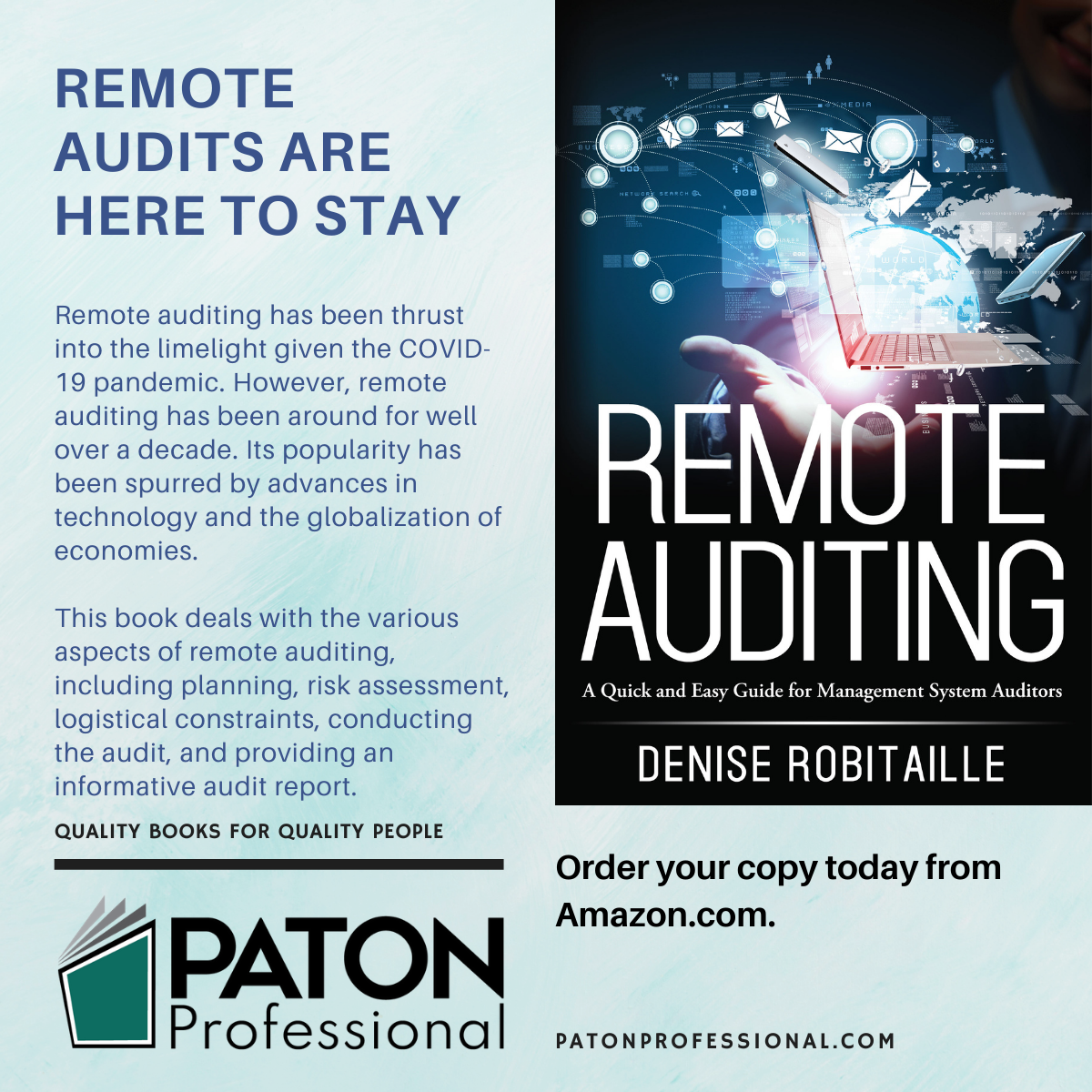by Shauna Wilson
How many times has a supplier audit been cancelled due to budget cuts, weather-related travel, or worse, supply chain aspects not captured because remote locations were excluded from the audit scope? Yet businesses continue to outsource service, labor, research and development, and manufacturing without clear means to verify performance or be notified of part changes or process modifications. Remote auditing, or eAuditing, is the solution to this growing global concern, and it is changing expectations. In this article, I’ll introduce five foundational steps to prepare for going virtual with communication and eAuditing.
To be clear, eAuditing is not a desk audit, email, or searching through a company’s records unattended. An eAudit is a systematic, independent, and documented process for obtaining sufficient audit evidence through electronic means. Audit evidence is gathered remotely to determine if the audit criteria are fulfilled. Like standard audit requirements, a defined audit process is followed. The eAuditor has passed associated ISO standard tests, is qualified to conduct an eAudit, and understands how to facilitate virtual communication and operate collaborative software.
Many forces are driving change in auditing. These include emerging global supply chains; increased ISO standards to mitigate economic, social, and environmental issues; and pressure to reduce company expenses—specifically travel costs for audits at remote locations. Companies are stuck in a tricky situation, and struggle to find an acceptable solution to meet regulatory requirements to certify quality systems. Desperate companies cut auditing budgets and venture out on their own. Because they have experience with Skype talking to family members, they conduct a virtual audit that cannot be validated. A trial-and-error approach in conducting virtual audits leads to distrust in the validity of objective data collected remotely, thus becoming a self-fulfilling prophesy. To break that cycle (figure 1) and prove the validity of an audit, eAuditing training, practice, and adequate technology is needed.

Many auditors claim difficulty in trusting others from a computer terminal. They are unable to resolve technical issues or understand complex processes often found in audits. If an auditor doesn’t know how to build trust and problem-solve complex problems online, it illustrates the auditor’s inexperience to facilitate and participate in virtual meetings. Video conferencing and collaborative software offer affordable technology to collaborate, according to leading virtual team specialists. With eAuditing, it’s possible to build consensus, audit manufacturing lines, and problem-solve. Building trust and solving problems becomes less of a concern as team members gain virtual experience. In figure 2, technology is matched with the ideal type of collaboration. For example, simple technology like email is commonly used to share information, ideas, and viewpoints. For solving problems, collaborative software is a good match and is sometimes a better tool than meeting face to face.

Three key components are claimed by successful virtual teams. These include cooperation by remote members, secure technology, and solid structures, such as virtual meeting training, defined communication processes, and clear management support. ANAB released Computer Assisted Auditing Techniques outlining specific structural areas to be addressed when a certification body conducts an eAudit. Here are five beginning steps:
- Create a management plan detailing agreement between interested parties, including audit schedules, auditor training needs, and audit methods, practicing risk-based thinking and defining policies in supply chain management.
- Set internet security standards and policies for use of password-protected Wi-Fi, reputable collaborative meeting rooms, and virus protection.
- Adopt hybrid audit models to broaden validated auditing methods and successfully conduct audits searching for compliance, performance results, and continual improvement that ensure the audit will move forward.
- Auditor training plan begins with a gap assessment looking for: experience in facilitating virtual meetings, the ability to use the functions in collaborative software, understanding of audit processes, and ISO standards. Advanced certifications like (CQA, CQIA, CPA) provide additional knowledge to review organizational performance and continual improvement.
- Get started! Practice an active role in your next virtual meeting. Conduct staff meetings online. Continual improvement teams give members a safe space to learn to use collaboration technology in larger dimensions. In figure 3, a simple daisy diagram template pasted on a collaborative white board was used to brainstorm ideas for conducting online meetings.

Moving to or improving virtual meetings and conducting eAudits offers companies cost savings from reduced travel, improved access to remote information and auditing efficiencies. Companies that are co-located can still benefit from practicing virtual meetings to enhance customer communication, and eAuditing external providers. The release of ISO 9001:2015 as a quality standard meant to be a framework sustaining companies for the next 10 years has taken bold steps to support innovation and standardization. It’s time to think bigger, outside our norm, to grasp the full opportunity ISO 9001:2015 has to offer. When we think in these terms, our internal audits need to perform greater functions. We need auditing systems that will provide better results, eAuditing is one step toward that goal.
References
- Wilson, Shauna. Successful Online Meetings, 2009 Infoline ASTD Alexandria, VA.
- Russell J.P., Wilson, Shauna. eAuditing Fundamentals; Virtual Communication and Remote Auditing, 2013 ASQ, Quality Press, Milwaukee, WI.
- Nemiro, Jill. The Handbook of High-Performance Virtual Teams: A Toolkit for Collaborating Across Boundaries, 2008, Jossey-Bass, San Francisco, CA.
- Cianfrani, Charles A., West, John E. ISO 9001:2005 Explained, Fourth Edition, 2015, ASQ, Quality Press, Milwaukee, WI.
- ANAB. Computer Assisted Auditing Techniques CAAT http://www.anab.org/media/30185/fa5025-caat-aqms.pdf
About the author
Shauna Wilson, president of Amazon Consulting Inc., has focused her consulting talents on performance management, international standards, and building high-performance internet teams. She has been at the forefront with her concept of InterneTeaming, leading the way to more collaborative methods for working over the internet. Working from home globally, Shauna understands what it takes to work remotely. Contracting with corporate 500 companies, Shauna has tested her revolutionary communication methods.
Wilson, a Certus-certified QMS auditor, collaborated with J.P. Russell to write a handbook on how to conduct remote audits—eAuditing Fundamentals: Virtual Communication and Remote Auditing—from ASQ Quality Press.
Copyright 2021 by Shauna Wilson. All rights reserved.






